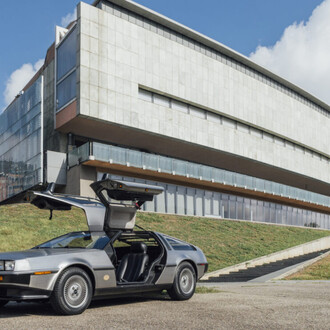After the summer break and for this edition of Ouverture TAG, the Febo e Dafne Gallery is pleased to present the exhibition Corpi in transito (Bodies in transit), a two-person show by Fabio Cipolla and Sofia Fresia, curated by Carina Leal. Corpi in transito stems from the encounter between two artistic practices - painting and sculpture - both of which reflect on the relationship between body and space through a key element they have in common: empty swimming pools. This relationship is built around a common tension: that between solitude and sharing, between the individual and the community, between swimming and skateboarding.
Sofia Fresia's works in this new mini-series were created with the intention of reflecting on some of the dynamics that characterise interpersonal relationships today. Using simple, almost geometric figuration, they depict isolated human figures immersed in suspended spaces, often in front of empty swimming pools, metaphors for a lack, a relational void. These paintings present imaginary scenarios in which the title, context and characters contribute to outlining certain characteristics or situations that have to do with the difficulties of human relationships within the society of images and consumption. For a swimmer, an empty swimming pool is useless, while for a skater it is perfect; in such a diverse society, many things and situations can have this dual meaning, and it is up to us to recognise them.
For this exhibition, Fabio Cipolla has focused his attention on swimming pools, where emptiness is transformed into space to be filled with gesture, material and relationships. In the 1950s, in California, due to a long period of drought, many swimming pools were emptied. Some surfers began to put wheels on their boards, moving from water to concrete. This gesture of creative occupation of space is at the heart of his work: an attentive and non-passive gaze that opposes the frenetic flow of the city and chooses pause, gesture and interaction. The sculptures on display are part of this reflection, activating public space and restoring centrality to the body, its imprint and its ability to leave a trace. Through form and material, he seeks to create objects that are not only to be observed but also to be inhabited: surfaces that become meeting places, steps, tables, seats, or supports for pictorial and collective intervention.
This exhibition is an invitation to read gestures as a form of resistance, the body as a measure, and space as a shared possibility.











